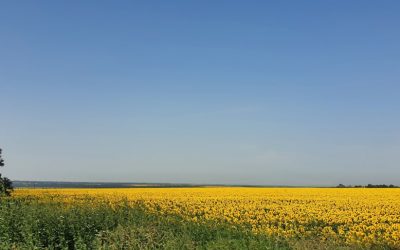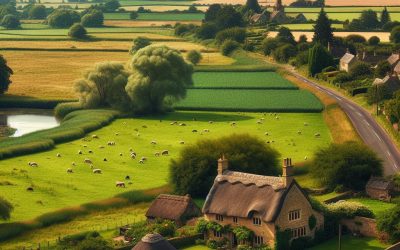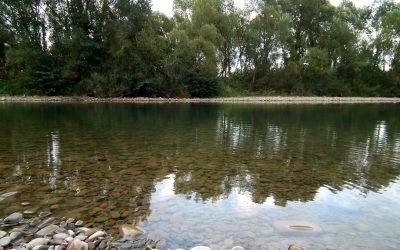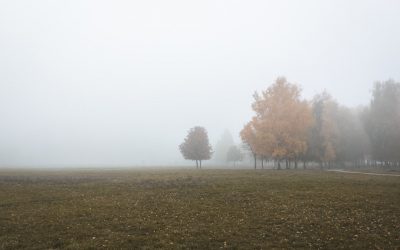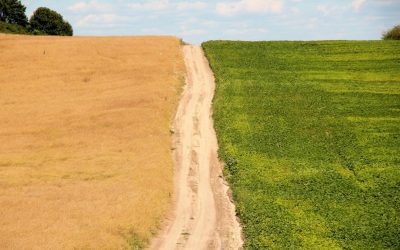World Geography
Geography is the study of the Earth’s landscapes, environments, and the relationships between people and their surroundings. It encompasses both the physical aspects of the Earth, such as its landforms, bodies of water, and climate, as well as the human aspects, including population distribution, cultures, and economies. World geography is a broad field that seeks to understand the complexities of our planet and how humans interact with it. By studying world geography, we can gain a deeper appreciation for the diversity of our planet and the interconnectedness of its various regions.
Geography is a multidisciplinary field that draws on elements of physical science, social science, and humanities. It involves the use of maps, spatial analysis, and geographic information systems (GIS) to understand the Earth’s surface and the processes that shape it. World geography also encompasses the study of human geography, which examines the ways in which people and their activities are distributed across the Earth. By understanding world geography, we can better appreciate the environmental, cultural, and economic challenges facing different regions of the world. This knowledge is crucial for addressing global issues such as climate change, resource management, and international development.
The Five Oceans and Seven Continents
The Earth’s surface is divided into five major oceans: the Pacific, Atlantic, Indian, Southern (or Antarctic), and Arctic Oceans. These vast bodies of water play a crucial role in regulating the Earth’s climate and supporting diverse marine ecosystems. The oceans also serve as important transportation routes and a source of food and other natural resources for human societies around the world.
In addition to the oceans, the Earth’s landmasses are divided into seven continents: Africa, Antarctica, Asia, Europe, North America, Australia (or Oceania), and South America. Each continent has its own unique physical and cultural characteristics, shaped by millions of years of geological processes and human history. From the deserts of Africa to the rainforests of South America, the continents offer a rich tapestry of landscapes and environments for exploration and study.
Major Mountain Ranges and Deserts
The Earth’s surface is also marked by major mountain ranges and deserts that have shaped the planet’s physical and cultural landscapes. The Himalayas, for example, are the highest mountain range in the world and are home to diverse ecosystems and cultures in countries such as India, Nepal, and Bhutan. The Andes in South America, the Rockies in North America, and the Alps in Europe are other prominent mountain ranges that have influenced human settlement patterns and economic activities.
Deserts cover about one-third of the Earth’s land surface and are characterized by low precipitation and extreme temperatures. The Sahara Desert in Africa is the largest hot desert in the world, while the Gobi Desert in Asia is one of the largest cold deserts. Deserts are not only home to unique flora and fauna but have also been important trade routes and cultural crossroads throughout history.
Climate Zones and Biomes
The Earth’s climate is influenced by a variety of factors, including latitude, altitude, ocean currents, and prevailing winds. As a result, the planet is divided into different climate zones, each with its own characteristic weather patterns and ecosystems. The equator, for example, experiences a tropical climate with high temperatures and heavy rainfall, while the polar regions have a cold and dry climate.
These climate zones give rise to different biomes, or large ecological areas characterized by distinct plant and animal communities. The tropical rainforest biome, found near the equator, is home to a diverse array of species and is vital for regulating the Earth’s climate. The grasslands biome, found in regions such as the African savannah and North American prairies, supports grazing animals and has been important for human agriculture throughout history.
Human Geography and Population Distribution
Human geography examines the ways in which people and their activities are distributed across the Earth’s surface. It encompasses topics such as population growth, migration patterns, urbanization, and cultural diversity. Understanding human geography is crucial for addressing global challenges such as poverty, inequality, and environmental degradation.
Population distribution is uneven across the world, with some regions experiencing rapid population growth while others are declining. The majority of the world’s population lives in Asia, particularly in countries such as China and India. Urban areas are also growing rapidly, with more than half of the world’s population now living in cities. This trend has significant implications for infrastructure development, resource management, and social inequality.
Historical and Cultural Geography
Historical geography examines how human activities have shaped the Earth’s landscapes over time. It explores topics such as colonialism, trade routes, and the rise and fall of empires. Cultural geography focuses on how human cultures have developed in different regions of the world and how they interact with their environments.
The Silk Road, for example, was an ancient trade route that connected China with Europe and facilitated the exchange of goods, ideas, and technologies across Eurasia. This historical trade route had a profound impact on the development of cultures and economies along its path. Similarly, cultural geographers study how different societies have adapted to their environments through practices such as agriculture, architecture, and religious beliefs.
The Importance of Geographic Knowledge
Geographic knowledge is crucial for addressing global challenges such as climate change, resource management, and international development. By understanding world geography, we can better appreciate the environmental, cultural, and economic challenges facing different regions of the world. This knowledge is crucial for addressing global issues such as climate change, resource management, and international development.
Geographic knowledge also helps us to understand our interconnectedness with other regions of the world. By studying world geography, we can gain a deeper appreciation for the diversity of our planet and the interconnectedness of its various regions. This understanding can foster a sense of global citizenship and empathy for people from different cultures and backgrounds.
In conclusion, world geography is a complex and multifaceted field that encompasses both physical and human aspects of the Earth’s landscapes. By studying world geography, we can gain a deeper appreciation for the diversity of our planet and the interconnectedness of its various regions. This knowledge is crucial for addressing global challenges such as climate change, resource management, and international development. It also helps us to understand our interconnectedness with other regions of the world and fosters a sense of global citizenship.
FAQs
What is world geography?
World geography is the study of the Earth’s landscapes, environments, and the relationships between people and their environments. It encompasses the physical features of the Earth, as well as the human activity that takes place on it.
Why is world geography important?
World geography is important because it helps us understand the world around us. It provides insights into the physical and human processes that shape our planet, and helps us make informed decisions about how to interact with our environment.
What are the main branches of world geography?
The main branches of world geography include physical geography, which focuses on the Earth’s natural features and processes, and human geography, which examines the relationships between people and their environments.
How does world geography impact our daily lives?
World geography impacts our daily lives in numerous ways, from influencing the weather and climate we experience, to shaping the availability of natural resources and influencing the distribution of populations and cultures around the world.
What are some key concepts in world geography?
Key concepts in world geography include location, place, human-environment interaction, movement, and region. These concepts help geographers understand and interpret the world around them.
Exploring the Hidden Gems of Zaporizhzhya: A Journey through Ukraine’s Industrial Heartland
Zaporizhzhya, located in southeastern Ukraine, is a city that holds great significance in the country’s industrial development. With a population of over 750,000 people, it is the sixth-largest city in Ukraine and serves as a major economic hub. The city is situated on the banks of the Dnieper River, which has played a crucial role in its history and development. Zaporizhzhya’s economy is primarily driven by heavy industry, with a focus on metallurgy, engineering, and energy production. The city is home to numerous factories, plants, and mills that contribute to Ukraine’s industrial output. In recent years, Zaporizhzhya has also seen growth in other sectors such as IT and tourism. Summary Zaporizhzhya is Ukraine’s industrial heartland, known for its factories, plants and mills. The city has a rich history of industrial development, tracing back to the Soviet era. Zaporizhzhya has many hidden gems, including parks, rivers, lakes, museums and art galleries. Visitors can explore the city’s industrial heritage by taking a tour of its factories, plants and mills. The local cuisine is a must-try, with many restaurants offering traditional Ukrainian dishes. The History of Zaporizhzhya: Tracing the Roots of Its Industrial Development Zaporizhzhya has a rich history that dates back to the Cossack era. The city was founded by the Cossacks in the 16th century and served as a stronghold for their resistance against foreign invaders. The Cossacks were known for their fierce independence and played a significant role in shaping Ukrainian identity. The Dnieper River has always been a vital part of Zaporizhzhya’s history and development. It provided a natural barrier against invaders and served as a transportation route...
Cambridgeshire, England
Cambridgeshire is a county located in the East of England. It is bordered by Lincolnshire to the north, Norfolk to the northeast, Suffolk to the east, Essex to the southeast, Hertfordshire to the south, Bedfordshire and Northamptonshire to the west, and Rutland to the northwest. The county covers an area of approximately 3,389 square kilometers (1,308 square miles) and has a population of around 850,000 people. Cambridgeshire is known for its rich history, stunning natural beauty, prestigious universities, and vibrant cultural scene. It offers a unique blend of rural charm and urban sophistication, making it an ideal destination for both nature lovers and city dwellers. With its picturesque villages, historic landmarks, and thriving economy, Cambridgeshire has something to offer everyone. Summary Cambridgeshire is a county located in the east of England. The history of Cambridgeshire dates back to Roman times and has a rich cultural heritage. Cambridgeshire is home to beautiful rivers, fens, and wildlife, making it a great destination for nature lovers. The county is famous for its universities, which are hubs of knowledge and innovation. Cambridgeshire boasts a diverse range of architecture, from medieval castles to modern developments. The History of Cambridgeshire: From Roman Times to the Present Day Cambridgeshire has a long and fascinating history that dates back to Roman times. The area was originally settled by the Romans in the 1st century AD, who established a number of small settlements along the River Cam. These settlements grew over time and eventually became the city of Cambridge. In the Anglo-Saxon period, Cambridgeshire was part of the Kingdom of East Anglia. The area saw further development and...
Exploring the Hidden Gems of Zakarpattya: A Journey Through Uzhhorod
Uzhhorod, located in western Ukraine, is a city that serves as the gateway to the beautiful region of Zakarpattya. Nestled in the Carpathian Mountains, Uzhhorod is known for its rich history, vibrant culture, delicious cuisine, and stunning natural beauty. In this blog post, we will explore the hidden gems of Uzhhorod and the surrounding region, providing you with a comprehensive guide to experiencing all that this enchanting destination has to offer. Summary Uzhhorod is the gateway to Zakarpattya’s hidden gems, offering a rich history, vibrant culture, culinary delights, natural beauty, and more. The city’s history can be explored through its castle and museum, showcasing the region’s past and present. Uzhhorod’s cultural scene is alive with theatre, music, and art, providing a diverse range of entertainment options. Foodies will love indulging in Zakarpattya’s culinary delights, from traditional dishes to modern fusion cuisine. Uzhhorod’s natural beauty can be enjoyed through its parks, gardens, and river walks, offering a peaceful escape from the city. Discovering the Rich History of Uzhhorod: From Castle to Museum Uzhhorod has a long and fascinating history that dates back to ancient times. The city has been influenced by various cultures and empires throughout the centuries, including the Celts, Romans, Hungarians, Austrians, and Ukrainians. One of the most iconic landmarks in Uzhhorod is the Uzhhorod Castle, which was built in the 9th century and played a significant role in the city’s history. Today, the castle is open to visitors and offers panoramic views of the city. Another must-visit attraction in Uzhhorod is the Transcarpathian Museum of Folk Architecture and Life. This open-air museum showcases traditional wooden buildings from...
Buckinghamshire, England
Buckinghamshire, located in the South East of England, is a county steeped in history and natural beauty. With its picturesque landscapes, charming villages, and rich cultural heritage, it has become a popular tourist destination. From the rolling hills of the Chilterns to the meandering River Thames, Buckinghamshire offers a wealth of outdoor activities and attractions for visitors to explore. Whether you’re interested in history, art, or simply enjoying the great outdoors, Buckinghamshire has something to offer everyone. Summary Buckinghamshire is a county with a rich history and culture, offering visitors a diverse range of experiences. From the Chiltern Hills to the River Thames, Buckinghamshire boasts stunning natural beauty and outdoor activities. Buckinghamshire’s top attractions include heritage sites, entertainment venues, and family-friendly activities. The county has produced notable personalities such as Roald Dahl, Enid Blyton, and David Bowie. Buckinghamshire offers a range of dining options, from traditional pubs to Michelin-starred restaurants. Discovering the Natural Beauty of Buckinghamshire One of the highlights of Buckinghamshire is the stunning Chiltern Hills, an Area of Outstanding Natural Beauty. With its rolling hills, ancient woodlands, and picturesque villages, it’s a paradise for outdoor enthusiasts. Visitors can enjoy hiking along the many trails that crisscross the hills, taking in breathtaking views along the way. The Chiltern Hills are also home to a variety of wildlife, making it a great spot for birdwatching and nature photography. Another natural gem in Buckinghamshire is the River Thames. Flowing through the county, it offers opportunities for boating and leisurely walks along its banks. Visitors can rent a boat or join a guided tour to explore the river and its...
Exploring the Hidden Gems of Volyn: Discovering the Charms of Luts’k
Volyn is a region in western Ukraine known for its natural beauty and rich culture. It is home to picturesque landscapes, charming towns, and a wealth of historical and cultural sites. One of the most notable cities in Volyn is Luts’k, the capital city of the region. Luts’k is steeped in history and culture, with a fascinating past that dates back centuries. In this article, we will explore the hidden gems of Luts’k and the surrounding region of Volyn, uncovering its historical sites, cultural landmarks, and natural wonders. Summary Volyn is a region of natural beauty and rich culture. Luts’k is a city with a deep history and culture. Tourists can uncover hidden gems in Luts’k with a guide. The Castle of Luts’k is a symbol of the city’s rich history. The Holy Trinity Cathedral is a spiritual haven in the heart of Luts’k. Luts’k: A City Steeped in History and Culture Luts’k is a city with a rich history and cultural significance. It has been inhabited since ancient times and has been ruled by various powers throughout its history, including the Lithuanians, Poles, and Russians. This diverse history has left its mark on the city, with architectural styles ranging from Gothic to Renaissance to Baroque. The city is also known for its literary heritage, with many famous writers and poets hailing from Luts’k. It has been a center of education and culture for centuries, with numerous schools, libraries, and museums. Uncovering the Hidden Gems of Luts’k: A Tourist’s Guide When visiting Luts’k as a tourist, there are several must-see attractions and hidden gems that should not be missed....
Berkshire, England
Berkshire is a county located in the South East of England, known for its rich history, natural beauty, and royal connections. It is bordered by Oxfordshire, Buckinghamshire, Surrey, Hampshire, and Wiltshire. The county has a population of over 900,000 people and is home to several towns and villages that offer a mix of rural charm and urban amenities. Berkshire’s royal connections can be traced back to the Windsor Castle, which has been the official residence of the British monarch since the 11th century. Summary Berkshire is a county with strong connections to the British monarchy. The natural beauty of Berkshire ranges from rolling hills to river valleys. Berkshire has a rich history that includes Roman settlements and Tudor palaces. The county’s towns and villages, such as Windsor and Cookham, are worth exploring. Berkshire offers a diverse cultural scene, from art galleries to music festivals. The Natural Beauty of Berkshire Berkshire boasts a diverse landscape that includes rolling hills, picturesque countryside, and charming riverside towns. The county is home to several natural attractions that draw visitors from near and far. One such attraction is the Windsor Great Park, a vast parkland that covers over 4,800 acres and offers stunning views of Windsor Castle. The park is home to ancient forests, tranquil lakes, and beautiful gardens, making it a perfect place for leisurely walks or picnics. Another popular natural attraction in Berkshire is the Thames Path, a long-distance walking trail that follows the course of the River Thames. The path offers breathtaking views of the river and passes through charming towns such as Henley-on-Thames and Sonning-on-Thames. Visitors can enjoy riverside...
Exploring the Hidden Gems of Vinnytsya: A Journey Through Central Ukraine’s Cultural Hub
Vinnytsya, located in central Ukraine, is a city with a rich history and vibrant culture. Situated on the banks of the Southern Bug River, Vinnytsya has been an important center of trade and commerce since ancient times. The city’s history dates back to the 14th century, and it has witnessed the rise and fall of various empires and civilizations. Vinnytsya is known for its cultural significance in Ukraine. It is home to numerous historical landmarks, museums, art galleries, and cultural events that showcase the country’s heritage and artistic talent. The city has a thriving arts and culture scene, with a wide range of performances, exhibitions, and festivals taking place throughout the year. Summary Vinnytsya is a cultural hub in central Ukraine with a rich history and vibrant arts scene. Lesser-known attractions in Vinnytsya include serene parks and gardens, fascinating folklore, and delicious local cuisine. Vinnytsya’s landmarks offer a glimpse into the city’s past, including the historic Pirogov Estate and the impressive Water Tower. The city’s arts and culture scene is thriving, with numerous museums, galleries, and theatres to explore. Vinnytsya’s nightlife and entertainment options are diverse, with everything from trendy bars to traditional folk music performances. Uncovering the Lesser-Known Attractions of Vinnytsya While Vinnytsya may not be as well-known as other cities in Ukraine, it is filled with hidden gems waiting to be discovered. One such gem is the Pirogov Estate, a beautiful complex that was once the residence of the famous Russian surgeon Nikolay Pirogov. The estate features a museum dedicated to Pirogov’s life and work, as well as stunning gardens and architecture. Another hidden gem in Vinnytsya...
Bedfordshire, England
Located in the heart of England, Bedfordshire is a county with a rich history and diverse landscapes. It is bordered by Hertfordshire to the south-east, Buckinghamshire to the west, Northamptonshire to the north, and Cambridgeshire to the east. The county has a population of approximately 670,000 people, making it one of the smaller counties in England. Bedfordshire has a long and fascinating history, with evidence of human habitation dating back to prehistoric times. The area was occupied by the Romans in the 1st century AD, who established settlements and built roads that still exist today. In medieval times, Bedfordshire became an important center for the wool trade, with many towns and villages prospering from this industry. The county also played a significant role in the Industrial Revolution, with the development of industries such as brickmaking and lace production. Summary Bedfordshire is a county located in the heart of England. The county has a rich history dating back to Roman times and has many historical landmarks. Bedfordshire’s countryside is beautiful and offers scenic landscapes for visitors to explore. The towns and cities in Bedfordshire are vibrant and offer a hub of culture and industry. Bedfordshire has many top attractions, including Woburn Abbey and Wrest Park. Bedfordshire’s Rich History: From Roman Times to the Modern Age The Roman occupation of Bedfordshire left a lasting impact on the county. They built roads such as Watling Street, which connected London to Chester, and established settlements such as Dunstable and Sandy. The Romans also introduced new agricultural techniques and built villas with underfloor heating systems. During the medieval period, Bedfordshire became known for...
Discovering the Hidden Gems of Ternopil’: A Journey Through Ukraine’s Charming City
Ternopil, a city located in western Ukraine, is often overlooked by tourists in favor of more well-known destinations like Kyiv or Lviv. However, this hidden gem is worth exploring for its rich history, stunning architecture, delicious cuisine, and vibrant arts scene. Ternopil offers a unique blend of Ukrainian heritage and modern charm, making it an ideal destination for those seeking an authentic cultural experience. Summary Ternopil is Ukraine’s best-kept secret, offering a unique blend of history, culture, and natural beauty. The city boasts a rich tapestry of Ukrainian heritage, with stunning architecture and landmarks to explore. Foodies will love savoring the flavors of Ternopil’s cuisine, while nature lovers can discover the city’s serene landscapes. The vibrant arts scene and unique shopping experiences make Ternopil a must-visit destination. With comfortable accommodation and travel tips, Ternopil is a hidden gem worth exploring in Ukraine. History and Culture: A Rich Tapestry of Ukrainian Heritage Ternopil’s history dates back to the 13th century when it was founded as a fortress town. Over the centuries, the city has been influenced by various cultures and empires, including Polish, Austrian, and Soviet. This diverse history has shaped Ternopil’s culture and created a unique blend of traditions and customs. Ukrainian traditions are deeply rooted in Ternopil’s culture, and visitors can experience them through various activities and events. Folk dances, traditional music performances, and craft workshops are just a few examples of the cultural experiences available in Ternopil. The city also boasts several museums that showcase the region’s history and heritage, including the Ternopil Regional Museum and the Museum of Ukrainian Pottery. Architecture and Landmarks: Exploring Ternopil’s Stunning...
Exploring Sumy: A Hidden Gem in Ukraine’s Countryside
Nestled in the rural heartland of Ukraine, Sumy is a lesser-known travel destination that offers a unique and authentic experience for visitors. While it may not be as well-known as cities like Kyiv or Lviv, Sumy has its own charm and allure that make it worth a visit. With its rich history, vibrant culture, and stunning natural landscapes, Sumy has something to offer every type of traveler. Sumy is located in northeastern Ukraine, near the border with Russia. It is the administrative center of the Sumy Oblast and has a population of around 250,000 people. The city is known for its picturesque parks, tree-lined streets, and beautiful architecture. It is also home to several universities and colleges, giving it a youthful and vibrant atmosphere. Why should you visit Sumy? Firstly, Sumy offers a break from the hustle and bustle of larger cities. It is a peaceful and tranquil destination where you can truly relax and unwind. The city’s natural beauty, with its parks, gardens, and reservoirs, provides the perfect backdrop for outdoor activities such as hiking and cycling. Additionally, Sumy’s rich history and cultural heritage make it an interesting place to explore. From its historic landmarks to its traditional cuisine, there is much to discover in this hidden gem of Ukraine. Summary Sumy is a lesser-known destination in Ukraine’s rural heartland with a rich history and culture dating back to the 17th century. Top attractions in Sumy include historic landmarks and natural wonders, such as the Sumy State University Botanical Garden and the Holy Trinity Monastery. Visitors can sample traditional Ukrainian dishes in Sumy, including borscht, varenyky, and salo....
Exploring the Rich History and Stunning Scenery of Sevastopol: A Journey Through the Jewel of the Black Sea
Sevastopol is a city with a rich history and culture located on the Crimean Peninsula in Ukraine. It is known for its stunning scenery, ancient Greek and Roman roots, and its role in significant historical events such as the Crimean War and the Cold War. Sevastopol is also home to the Black Sea Fleet, which has played a crucial role in the city’s maritime heritage. In addition to its historical significance, Sevastopol offers visitors a range of outdoor attractions, museums, monuments, and a diverse culinary scene. Whether you are interested in history, nature, or simply enjoying the beauty of the city, Sevastopol has something to offer everyone. Summary Sevastopol is a city with a rich history and culture. The city has ancient Greek and Roman roots, and played a significant role in the Crimean War. Sevastopol was also a key location during the Soviet era and the Cold War. The city has a strong maritime heritage, with the Black Sea Fleet being based there. Sevastopol boasts stunning scenery, museums, monuments, art, architecture, and a diverse food and drink scene. The Ancient Greek and Roman Roots of Sevastopol Sevastopol has its origins as a Greek colony known as Chersonesus. Founded in the 5th century BC by settlers from Heraclea Pontica, Chersonesus quickly became an important trading center in the region. The city was strategically located on the southwestern coast of the Crimean Peninsula, providing easy access to trade routes in the Black Sea. During the Roman period, Chersonesus became an important outpost of the Roman Empire. The city was fortified with defensive walls and towers, some of which can still...
Exploring the Hidden Gems of Rivne: A Journey Through the Heart of Western Ukraine
Rivne, located in western Ukraine, is a city that often gets overlooked by tourists in favor of more well-known destinations like Kyiv or Lviv. However, this hidden gem has a rich history and a vibrant culture that make it well worth a visit. Founded in the 13th century, Rivne has seen its fair share of historical events and has managed to preserve its unique charm throughout the years. Rivne is situated in the Rivne Oblast, which is known for its picturesque landscapes and natural beauty. The city itself is located on the banks of the Ustya River and is surrounded by lush forests and rolling hills. This makes it an ideal destination for nature lovers and outdoor enthusiasts. Summary Rivne is a lesser-known city in Western Ukraine with a rich cultural and historical heritage. The city boasts a variety of museums, theatres, galleries, parks, lakes, forests, castles, churches, and monuments. Visitors can also indulge in the local cuisine, shop at markets and boutiques, and experience the nightlife at bars, clubs, and music venues. Festivals and events celebrate local culture and traditions, while day trips allow for exploration of the surrounding countryside and towns. When planning a trip to Rivne, it’s important to consider practical information and recommendations for a smooth and enjoyable experience. Discovering the Cultural Treasures of Rivne: Museums, Theatres, and Galleries Rivne is home to a number of cultural attractions that showcase the city’s rich history and artistic heritage. One of the must-visit museums in Rivne is the Rivne Regional Museum, which houses a vast collection of artifacts and exhibits that tell the story of the region’s...
